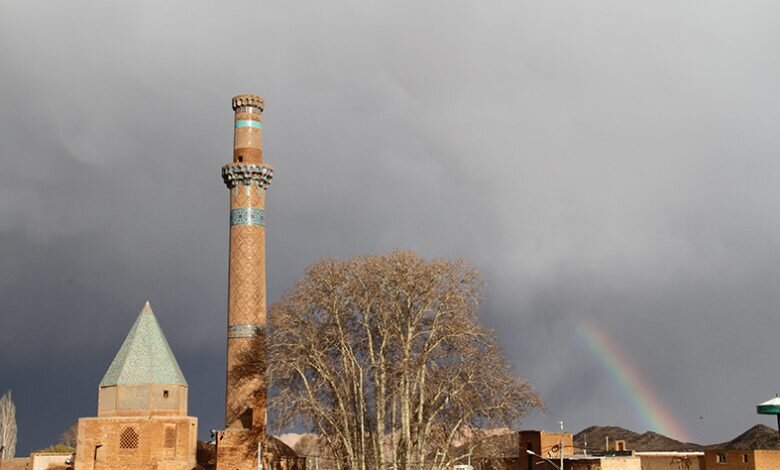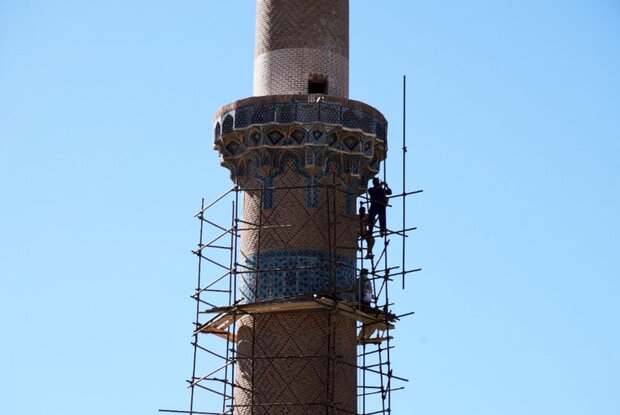Ancient mudbrick minaret restored as routine maintenance

TEHRAN–A team of cultural heritage experts has finished work to restore and strengthen the sole minaret of an ancient mosque that stands tall in the heart of Iran.
“It was the second phase of restoration conducted as routine maintenance on the minaret of the Jameh Mosque of Natanz ,” CHTN quoted Natanz’s tourism chief as saying on Sunday.
“Restoration, reconstruction and strengthening of the damaged parts of the minaret, especially the strapping and replacement of the worn tiles and bricks of the middle body, finished today.”
Over time, the materials used in the historical building are subject to wear and tear, and it is necessary to be restored every 20 years, especially the parts that are most at risk of erosion and falling and get damaged, the official explained.
Fortunately, the Jameh Mosque of Natanz enjoys such continuity of restoration, he concluded.

The place of worship is located on a site occupied since the Buyid period (tenth/fourth century AH). In the fourteenth/eighth century AH it took the form it does today, growing into a complex that included the tomb of a local Sufi Sheikh named 'Abd al-Samad Al-Isfahani, as well as a Khanqah.
Today the mosque complex contains a four-iwan mosque, an octagonal sanctuary, a minaret, and a mosque from the 1930s fronted by a fourteenth-century Khanqah portal.
According to Archnet, the organization of these structures at varying angles and on multiple floor levels reflects the difficulty with which they were inserted into the existing built context. The much-admired southern façade of colorful glazed tile, terracotta, and stucco bends slightly to bring together the four constituent structures that lie behind, creating a harmonious exterior appearance.
On its southwestern facade, the iwan contains a mihrab and opens through its back onto an octagonal sanctuary, and on its east side to a covered prayer hall. Restoration during the 1970s revealed that this octagonal sanctuary predates the courtyard mosque and was originally a freestanding Buyid pavilion from 999 CE/389 AH.
The terms “Jameh Mosque”, “Masjed-e Jameh” and “Friday Mosque” are used in Iran for a grand communal mosque where mandatory Friday prayers are performed: the phrase is used in other Muslim countries but only in Iran does it designate this purpose.
AM
